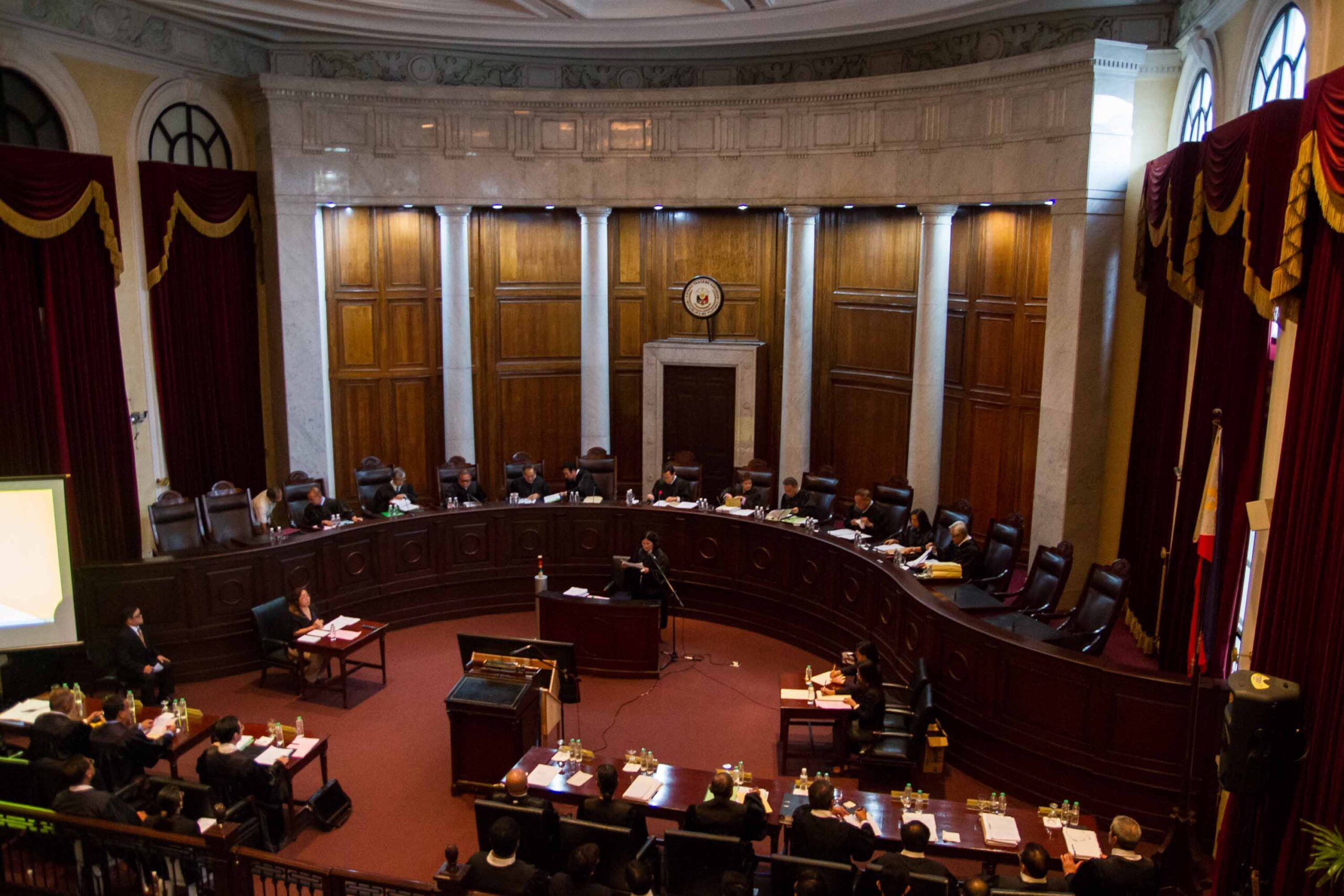SUMMARY
This is AI generated summarization, which may have errors. For context, always refer to the full article.

MANILA, Philippines – Is the petition against the controversial Torre de Manila condominium project a case of “one special treatment versus another”?
Justices of the Supreme Court (SC) criticized the Knights of Rizal for elevating their opposition against the 46-story building to the highest court of the land and skipping the lower courts because they were “slow.”
During the oral arguments on the case on Tuesday, July 21, SC Associate Justice Marvic Leonen took exception to the answer of lawyer William Jasarino, legal counsel of the Knights of Rizal, when asked to explain why the group did not file a case with the lower courts and instead went directly to the SC.
Jasarino told the magistrates that the group decided to seek relief from the High Court because they did not trust the lower courts to come out with a resolution quick enough to stop the ongoing construction of Torre de Manila.
To this, Leonen replied: “Is that basis for us to take jurisdiction?”
He pointed out that by going directly to the SC, the group is asking for exemption from the rules of court – a situation he likened to the “special treatment” that, the Knights of Rizal claim, was given by the Manila city council when it exempted Torre de Manila from local zoning laws.
“If we accept that we bypass the lower courts because they are excruciatingly slow, don’t you think this is unfair? It’s unfair that you ask relief from the Supreme Court, bypassing all our stated rules because your case is very, very special,” Leonen said.
He added, “So the special treatment that we give you, is that not the same as the special treatment given by the city council to Torre de Manila? So one special treatment versus another?”
“Not the same, your honor,” Jasarino replied.
Tuesday’s hearing saw the Knights of Rizal defend their September 2014 petition, which seeks to have Torre de Manila demolished because it marred the “visual dominance” of the Rizal Monument in Luneta Park.
The group also claimed that the building violated heritage laws and local zoning regulations, allegations denied by the building’s developer, DMCI Homes.
Eleven SC magistrates were present for the oral arguments. Absent from the proceedings were Chief Justice Maria Lourdes Sereno, Justice Bienvenido Reyes, and Justice Arturo Brion, who are on leave.
Meanwhile, Justice Jose Perez inhibited because his son bought a unit at the controversial housing project.
Where’s the evidence?
During the interpellations, Jasarino repeatedly emphasized that DMCI built the high-rise building in “bad faith” because the developer continued with the project despite already knowing the zoning limitations in the area.
Given Manila’s zoning ordinance, Torre de Manila should have a maximum of only 7 floors, since it is located within the institutional university cluster. But even before DMCI was granted an exemption from the zoning law in January 2014, the developer had already planned for a high-rise building, Jasarino claimed.
Leonen, however, was not convinced.
“You have, based on one of your allegations, the argument that DMCI has originally and has always, from its inception, planned for 49 stories. Do you have evidence? Do not make factual assertions in a court of law without evidence,” he told Jasarino.
The lawyer admitted that he had “no hard evidence that is probably in the mind of the Honorable Justice Leonen.”
The SC justice again pointed out that it would have been more prudent for the petitioner to go a trial court to establish the facts.
Jasarino was also lectured on the same point by Justice Antonio Carpio, who noted the changing nature of the group’s petition.
In their petition, the Knights of Rizal claimed the building was a nuisance per se (that which affects the immediate safety of persons and property) and sought injunction from the High Court.
During interpellation, Jasarino conceded that the building was a nuisance per accidens (that which becomes a nuisance upon certain conditions or circumstances).
“We already converted your petition from injunction to mandamus, from nuisance per se to accidens. Now you ask us to try facts? How can we now determine that Torre de Manila is a nuisance per accidens when we have no evidence from you?” Carpio asked.
He added, “Before you come here you should have presented your evidence before a trial court. We’ve never received evidence here. You better address this issue in your memorandum.”
In his interpellation, Justice Presbitero Velasco noted that construction on the project began in 2012, but it was not until 2014 that the group filed its petition.
If the Knights of Rizal had filed a case with the lower court, they could have “nipped the project in the bud,” Velasco said.
In response, Jasarino said that the group tried other means of stopping the project, such as calling the attention of DMCI and the City of Manila, before finally deciding to go to court.
Respondents’ round
The High Court is set to hold a second round of oral arguments at 2 pm on August 4.
Respondents DMCI, City of Manila, National Commission for Culture and the Arts, National Museum, and the National Historical Commission of the Philippines are set to present their arguments.
Among other issues, the court is set to determine whether the constitutional mandate to conserve and protect cultural heritage and resources – such as the historic Rizal Monument – also extends to the preservation of its “prominence, dominance, vista points, vista corridors, sight lines and setting.”
Magistrates will also determine the effect of its ruling on shrines and monuments that currently have towers in their line of sight, as well as the damage to be sustained by DMCI, its workers, investors, and buyers of the project, in case the building is demolished. – Rappler.com
Add a comment
How does this make you feel?
There are no comments yet. Add your comment to start the conversation.